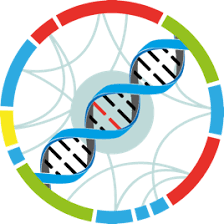Study : Tissue specific light response during Arabidopsis de-etiolation
Identification
Name
Tissue specific light response during Arabidopsis de-etiolation
Identifier
dXJuOkVWQS9zdHVkeS9QUkpOQTU0OTI4Ng==
Description
The time between seed germination and the development of the first true leaves is crucial for plants success. Depending on the environmental light conditions a plant must decide which developmental program to use. If light is limited, the seedling will use etiolated growth characterized by an elongated hypocotyl and tightly-closed, underdeveloped cotyledons, thus allowing it to reach a light source as quickly as possible. In contrast, seedlings that are grown in unlimited light will use de-etiolation growth, that is characterized by inhibited hypocotyl growth and unhooked, unfolded and fully expanded cotyledons. These seedlings become photosynthetic and increase their chances for reproduction. Interestingly, the outcome of the light signal varies between the seedling’s different organs, e.g. hypocotyl growth is inhibited by light whereas cotyledon expansion is induced. Separating the cotyledons and hypocotyls of de-etiolated seedlings during their first 12 hours of white light exposure, enabled us to perform individual transcriptome analyses of each organ and to examine what causes this variation in light responsiveness. Overall design: mRNA from cotyledons and hypocotyls of three-days-old old dark growing seedlings (dark) which moved to simulated white light (Blue, Red and low Far-red Led light – 100 µmol m−2 s−1) for 15 minutes, 30 minutes, one hour, three hours, six hours or 12 hours.
Data files
- SRR9312942
- SRR9312941
- SRR9312936
- SRR9312935
- SRR9312934
- SRR9312933
- SRR9312932
- SRR9312931
- SRR9312930
- SRR9312929
- SRR9312952
- SRR9312951
- SRR9312950
- SRR9312949
- SRR9312948
- SRR9312947
- SRR9312946
- SRR9312945
- SRR9312944
- SRR9312940
- ERZ1377329
- ERZ1377340
- ERZ1377331
- ERZ1377335
- ERZ1377328
- ERZ1377344
- ERZ1377343
- ERZ1377325
- ERZ1377320
- ERZ1377338
- ERZ1377336
- ERZ1377321
- ERZ1377337
- ERZ1377324
- ERZ1377322
- ERZ1377317
- ERZ1377348
- ERZ1377327
- ERZ1377339
- ERZ1377326
Genotype
| Accession number | Name | Taxon |
|---|
